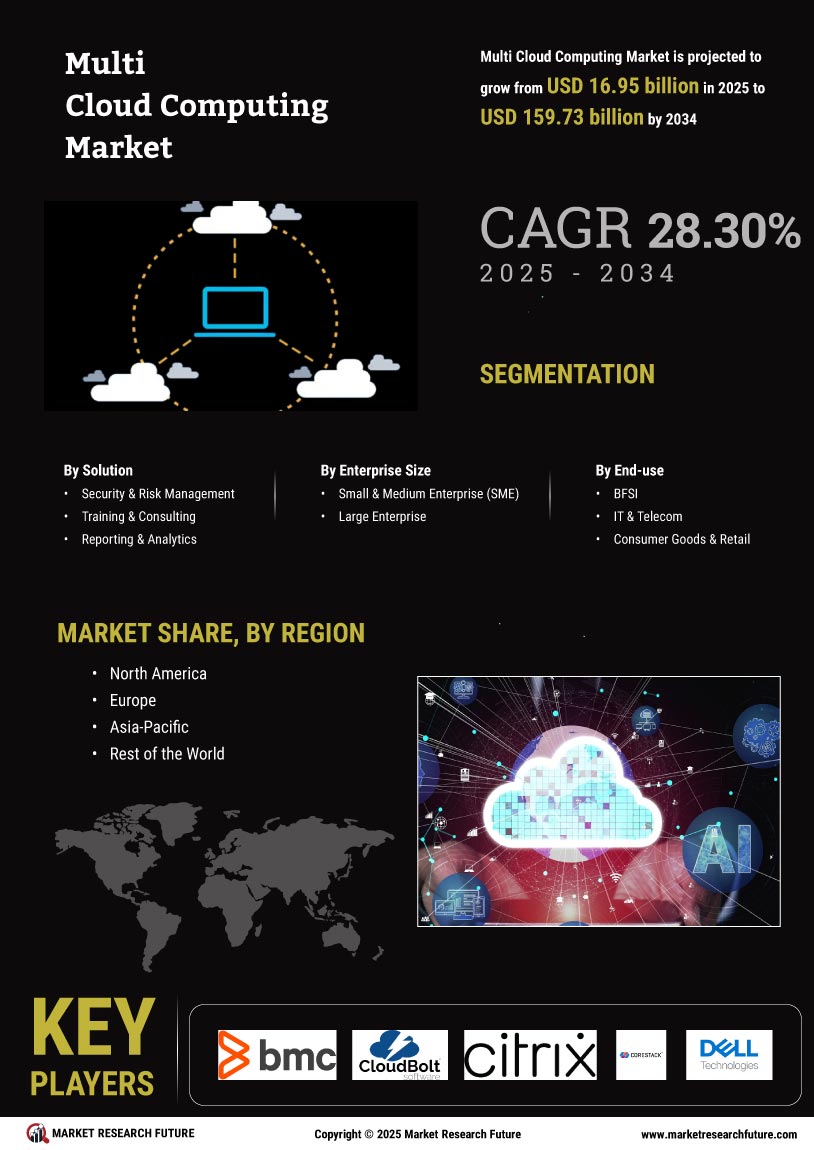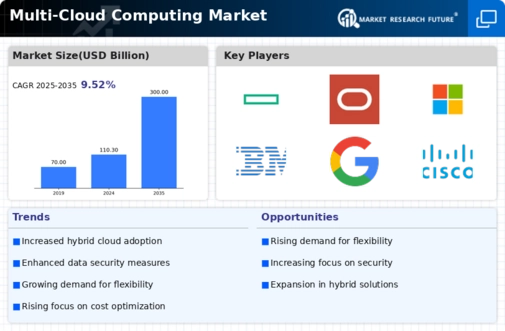The Multi-Cloud Computing Market is currently characterized by a dynamic competitive landscape, driven by the increasing demand for flexible and scalable cloud solutions. Major players such as Amazon Web Services (US), Microsoft Azure (US), and Google Cloud (US) are at the forefront, each adopting distinct strategies to enhance their market positioning. Amazon Web Services (US) continues to innovate with a focus on expanding its service offerings, while Microsoft Azure (US) emphasizes strategic partnerships and integrations to bolster its enterprise solutions. Google Cloud (US) appears to be concentrating on enhancing its AI capabilities, which could potentially reshape its competitive edge. Collectively, these strategies contribute to a highly competitive environment, where differentiation is increasingly reliant on technological advancements and customer-centric solutions.
In terms of business tactics, companies are increasingly localizing their services to cater to regional demands, optimizing supply chains to enhance efficiency, and investing in sustainability initiatives. The market structure is moderately fragmented, with a mix of established giants and emerging players. This fragmentation allows for diverse offerings, yet the influence of key players remains substantial, as they set benchmarks for innovation and service quality.
In September 2025, Amazon Web Services (US) announced the launch of its new hybrid cloud solution, which integrates on-premises infrastructure with its cloud services. This strategic move is likely to enhance its appeal to enterprises seeking flexibility and control over their data management. By bridging the gap between traditional IT and cloud environments, AWS may solidify its leadership position in the multi-cloud space, catering to businesses that require tailored solutions.
In August 2025, Microsoft Azure (US) expanded its partnership with SAP to enhance cloud-based enterprise resource planning (ERP) solutions. This collaboration is significant as it not only strengthens Azure's foothold in the enterprise market but also aligns with the growing trend of integrating cloud services with existing business applications. Such partnerships may facilitate smoother transitions for organizations moving to the cloud, thereby enhancing customer loyalty and retention.
In July 2025, Google Cloud (US) unveiled its new AI-driven analytics platform aimed at improving data insights for businesses. This initiative underscores Google Cloud's commitment to leveraging artificial intelligence as a core component of its service offerings. By providing advanced analytics capabilities, Google Cloud could attract a broader customer base, particularly those focused on data-driven decision-making, thus enhancing its competitive stance in the market.
As of October 2025, the competitive trends in the Multi-Cloud Computing Market are increasingly defined by digital transformation, sustainability efforts, and the integration of artificial intelligence. Strategic alliances are playing a crucial role in shaping the landscape, as companies seek to combine strengths to deliver comprehensive solutions. Looking ahead, competitive differentiation is likely to evolve from traditional price-based competition to a focus on innovation, technological advancements, and the reliability of supply chains. This shift may redefine how companies position themselves in the market, emphasizing the importance of adaptability and forward-thinking strategies.

















Leave a Comment